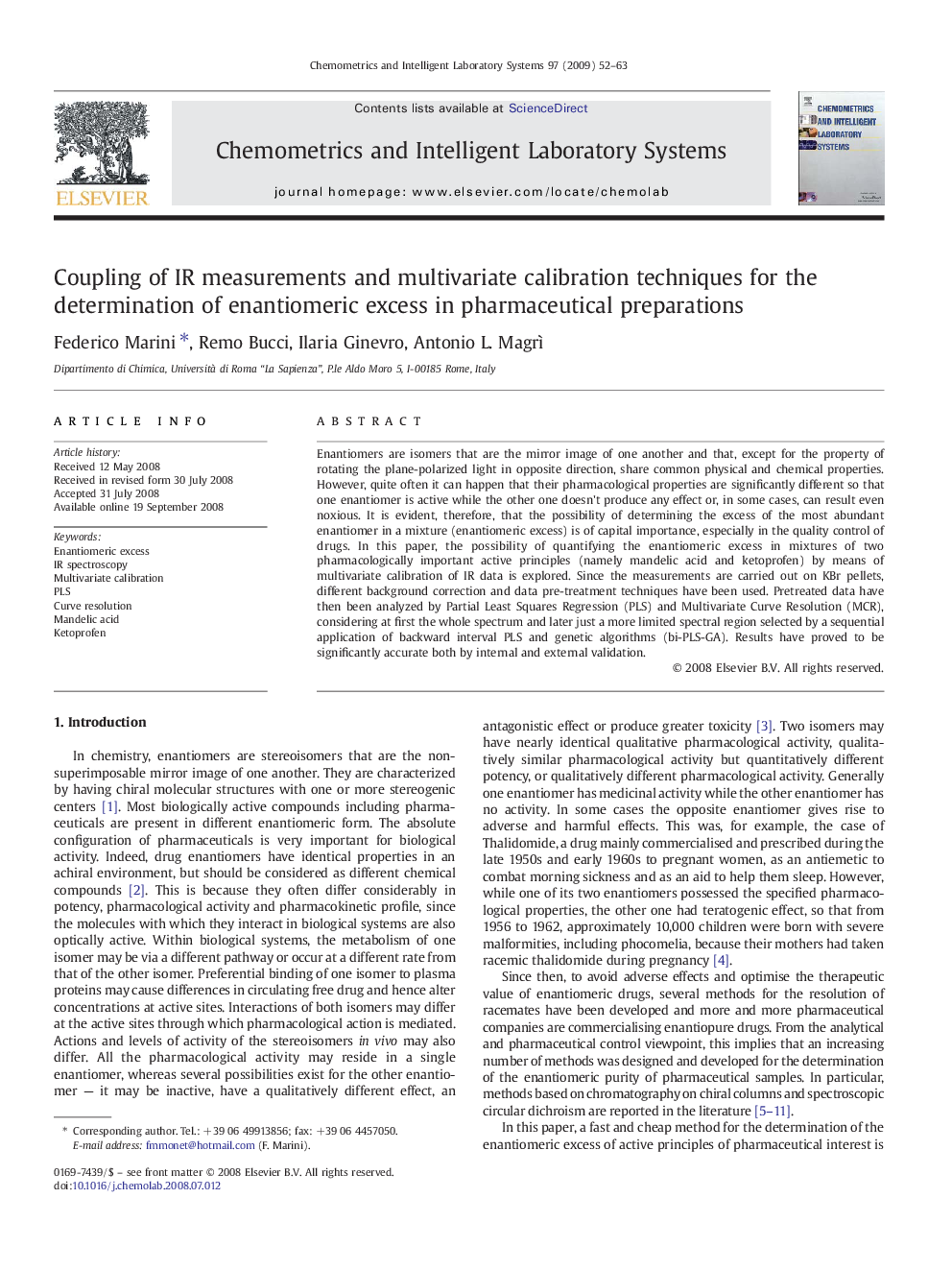| کد مقاله | کد نشریه | سال انتشار | مقاله انگلیسی | نسخه تمام متن |
|---|---|---|---|---|
| 1180287 | 962841 | 2009 | 12 صفحه PDF | دانلود رایگان |

Enantiomers are isomers that are the mirror image of one another and that, except for the property of rotating the plane-polarized light in opposite direction, share common physical and chemical properties. However, quite often it can happen that their pharmacological properties are significantly different so that one enantiomer is active while the other one doesn't produce any effect or, in some cases, can result even noxious. It is evident, therefore, that the possibility of determining the excess of the most abundant enantiomer in a mixture (enantiomeric excess) is of capital importance, especially in the quality control of drugs. In this paper, the possibility of quantifying the enantiomeric excess in mixtures of two pharmacologically important active principles (namely mandelic acid and ketoprofen) by means of multivariate calibration of IR data is explored. Since the measurements are carried out on KBr pellets, different background correction and data pre-treatment techniques have been used. Pretreated data have then been analyzed by Partial Least Squares Regression (PLS) and Multivariate Curve Resolution (MCR), considering at first the whole spectrum and later just a more limited spectral region selected by a sequential application of backward interval PLS and genetic algorithms (bi-PLS-GA). Results have proved to be significantly accurate both by internal and external validation.
Journal: Chemometrics and Intelligent Laboratory Systems - Volume 97, Issue 1, 15 May 2009, Pages 52–63